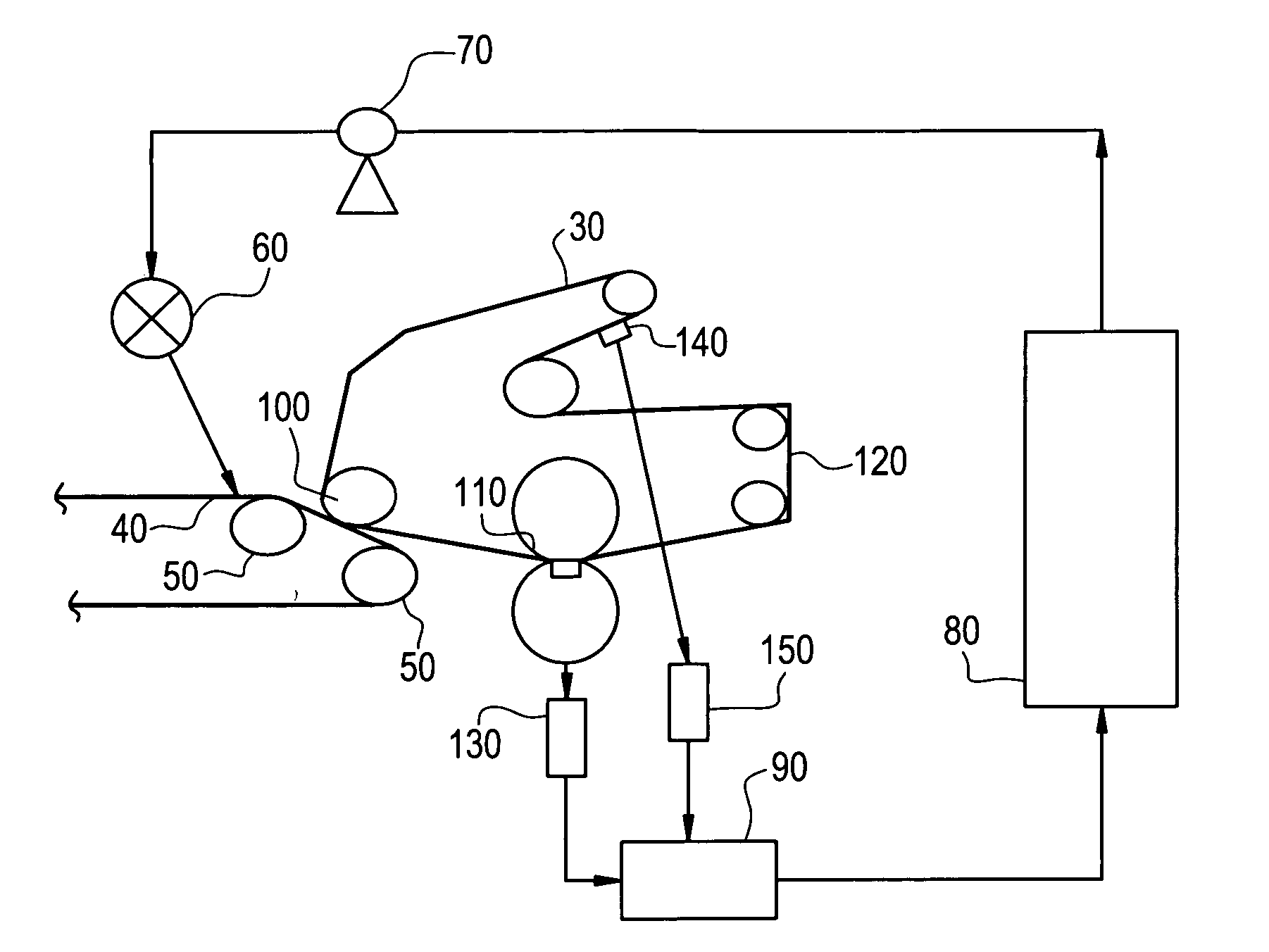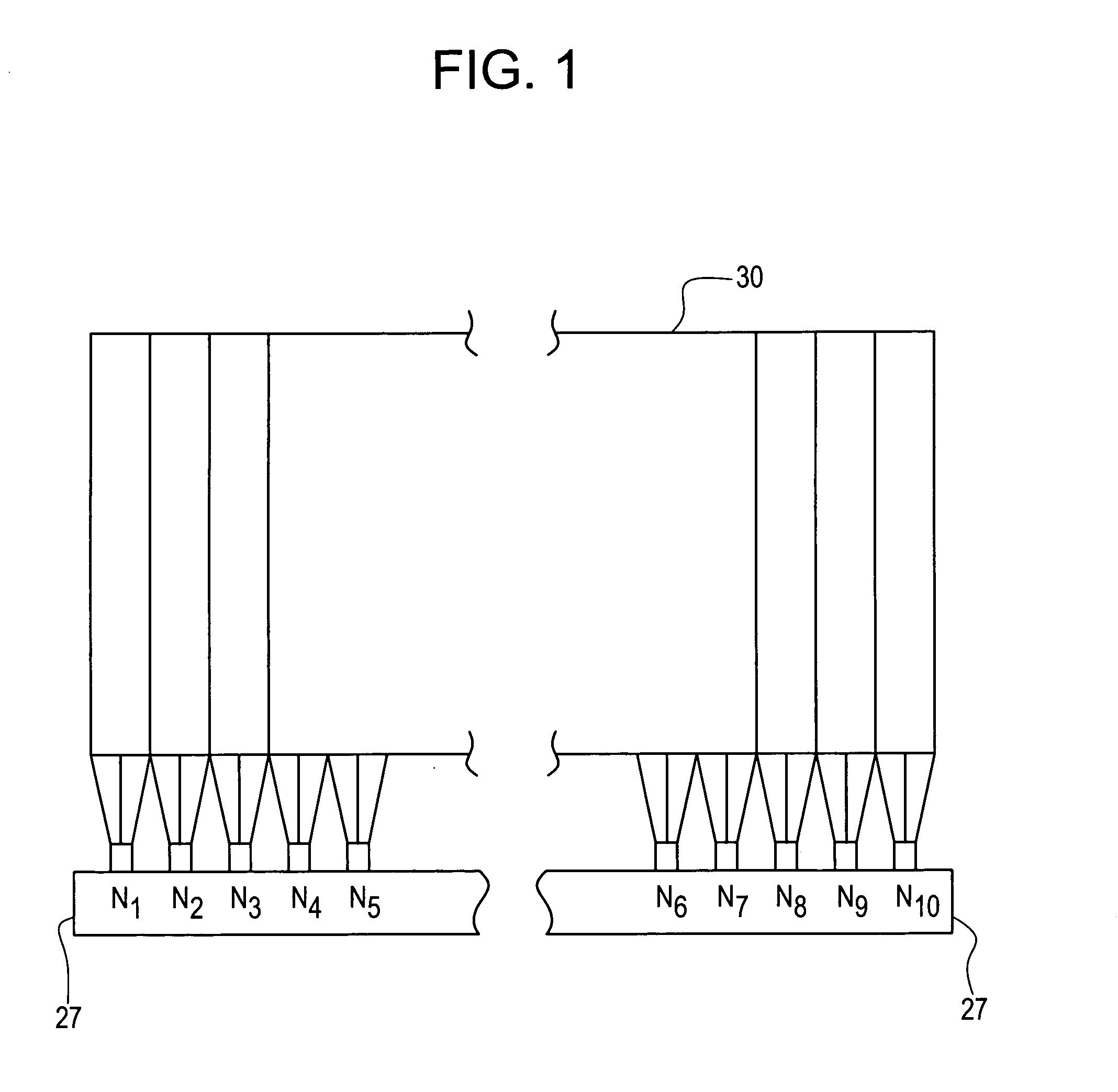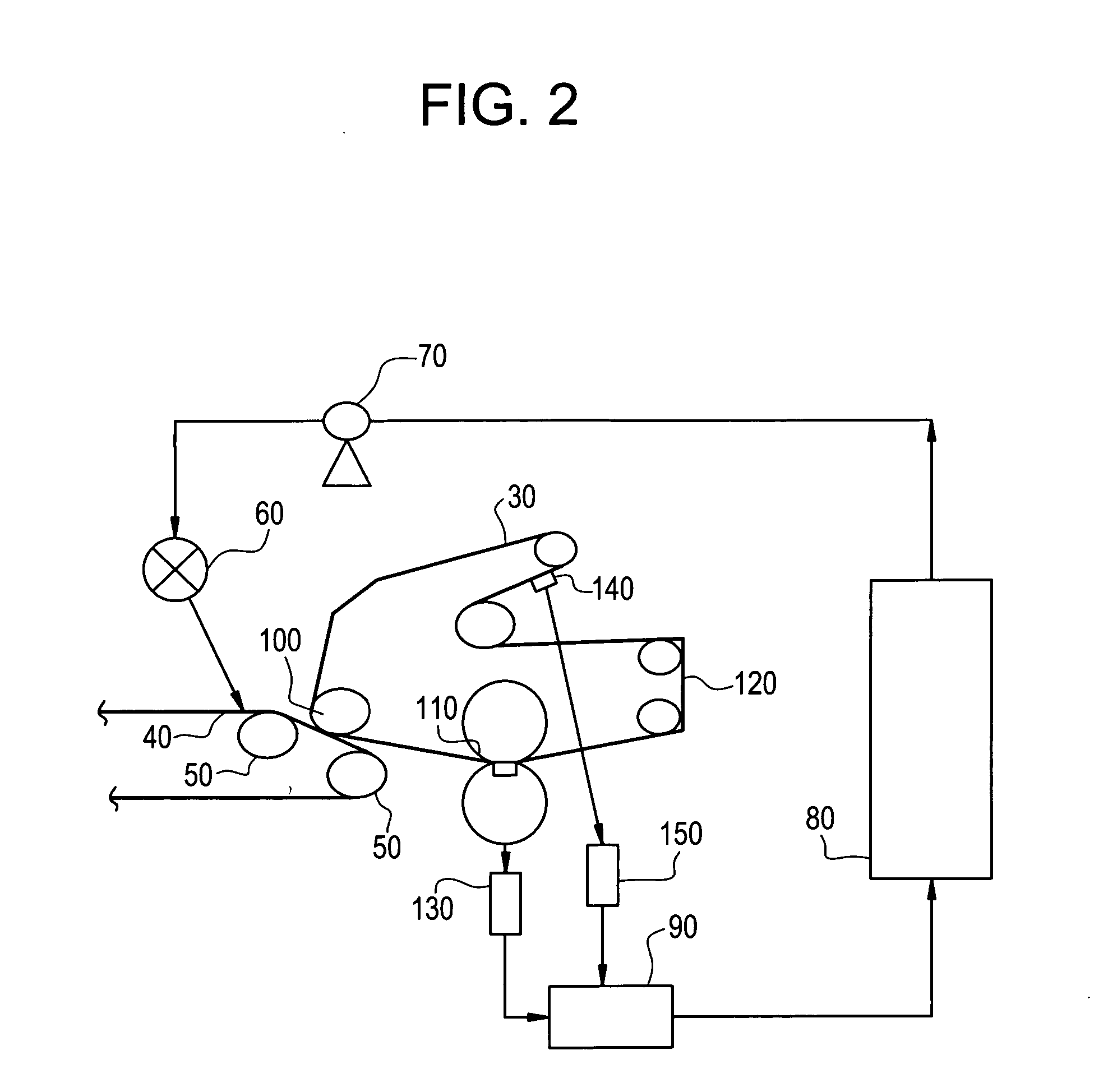System and method to control press section dewatering on paper and pulp drying machines using chemical dewatering agents
a technology of press section and dewatering agent, which is applied in the direction of press section, chemical/biochemical paper treatment, instruments, etc., can solve the problems of affecting the efficiency of paper drying machines, the most expensive part of paper machines in terms of capital and operating costs, and the cost per unit of water removed is greater than 20 times that of the press section
- Summary
- Abstract
- Description
- Claims
- Application Information
AI Technical Summary
Benefits of technology
Problems solved by technology
Method used
Image
Examples
example 1
[0064] This example demonstrates the press section dewatering effect obtained after the addition of varying amounts of a chemical dewatering agent.
[0065] Controlled trials were conducted on a paper board machine by applying the chemical agent in a spray application to the paper web prior to entry into the press section. Product doses were varied from 0-1.5 lb (actives) / ton over a four hour period. Measurements of sheet consistency were made periodically before sheet entry into the press section and sheet exit out of the press section during the time period that coincided with chemical dose variation. Sheet consistency measurement can be made by random sampling method of the passing paper web, or by nuclear mass measurement (gamma gauge) to calculate the inferred moisture from the known dry mass. Chemical additives were two different variations of the glyoxylated DADMAC (diallyldimethylammonium chloride) / AcAm (ammonium acetate) type, and the mill was manufacturing a corrugating medi...
PUM
| Property | Measurement | Unit |
|---|---|---|
| temperature | aaaaa | aaaaa |
| chemical | aaaaa | aaaaa |
| chemical dewatering | aaaaa | aaaaa |
Abstract
Description
Claims
Application Information
 Login to View More
Login to View More - R&D
- Intellectual Property
- Life Sciences
- Materials
- Tech Scout
- Unparalleled Data Quality
- Higher Quality Content
- 60% Fewer Hallucinations
Browse by: Latest US Patents, China's latest patents, Technical Efficacy Thesaurus, Application Domain, Technology Topic, Popular Technical Reports.
© 2025 PatSnap. All rights reserved.Legal|Privacy policy|Modern Slavery Act Transparency Statement|Sitemap|About US| Contact US: help@patsnap.com



